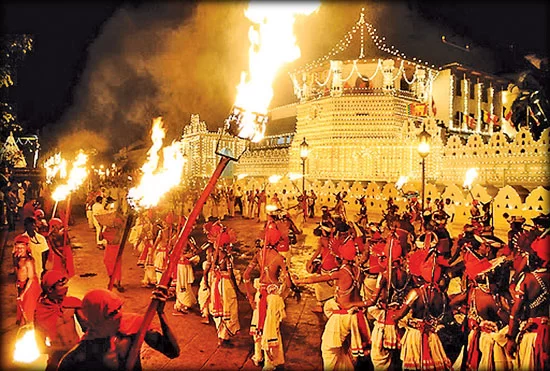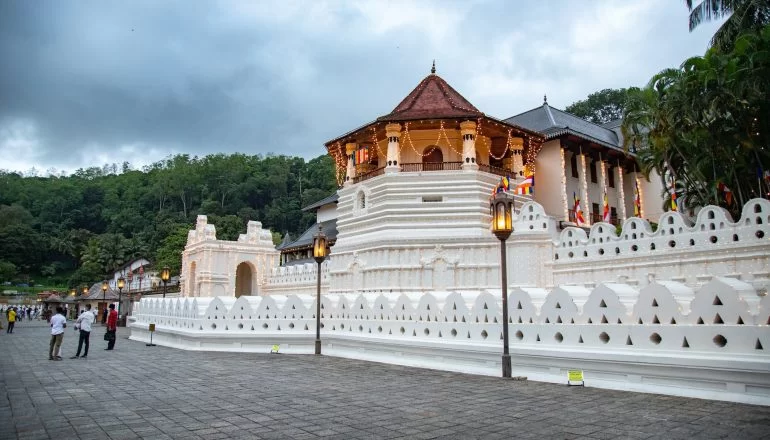Tamil Buddhist Influence in Sri Lanka: A Deep Dive into Cultural Connections
- 1. Introduction to Tamil Buddhist Influence in Sri Lanka
- 2. Historical Context of Tamil Buddhism in Sri Lanka
- 3. Religious Symbiosis Between Tamil and Sinhala Cultures
- 4. Significant Tamil Buddhist Temples and Sites
- 5. Cultural Expressions and Art Influenced by Tamil Buddhism
- 6. Experiencing Tamil Buddhist Heritage in Sri Lanka
1. Introduction to Tamil Buddhist Influence in Sri Lanka
Sri Lanka, an island nation rich in cultural diversity, is home to a long-standing connection between Tamil culture and Buddhism. While the Sinhalese majority has historically been the primary group associated with Buddhism in Sri Lanka, the Tamil Buddhist influence is an integral and often overlooked aspect of the country's religious and cultural fabric. Tamil Buddhism, with its deep roots in South India, has had a profound impact on the island's spiritual and artistic expressions. This influence can be traced through centuries of historical interaction, especially during the Tamil rule of the Jaffna Kingdom in the northern part of Sri Lanka.
The Tamil Buddhist influence is unique in that it blends local traditions with South Indian Buddhist practices, leading to a cultural fusion that continues to shape Sri Lanka's identity today. From the architectural features of Buddhist temples to the culinary practices tied to religious festivals, Tamil Buddhism has enriched Sri Lanka’s diverse religious landscape. For travelers seeking to understand the depth of Sri Lankan Buddhism, exploring the Tamil Buddhist influence provides an opportunity to appreciate the multifaceted nature of the island's spiritual history.
2. Historical Context of Tamil Buddhism in Sri Lanka
The historical context of Tamil Buddhism in Sri Lanka goes back to the early centuries of the Common Era when Tamil-speaking Buddhists from South India began to establish a presence on the island. The cultural exchanges between Tamil Nadu in southern India and Sri Lanka were facilitated by both trade and political relationships. Tamil Buddhism, introduced through the Tamil kingdom in the north of Sri Lanka, significantly influenced the development of Sri Lankan Buddhist practices.
During the reign of the Jaffna Kingdom (13th to 17th century), the Tamil influence on Sri Lankan Buddhism reached its peak. The Tamil kings supported the construction and restoration of Buddhist temples, which were often designed with elements of South Indian temple architecture, blending Tamil artistic traditions with the established Sri Lankan Buddhist aesthetic. This era marked the flourishing of Tamil-speaking Buddhist communities in northern and eastern Sri Lanka, where Buddhism and Tamil culture were intricately woven together.
The role of Tamil Buddhist monks in spreading the teachings of Buddhism in the region cannot be understated. Many Tamil Buddhists played pivotal roles in preserving Buddhist texts and traditions, which were transmitted between India and Sri Lanka. The interaction between Tamil Buddhists and the Sinhalese Buddhist community also led to the sharing of religious practices, such as temple rituals, which continue to shape Buddhist life in Sri Lanka today.
3. Religious Symbiosis Between Tamil and Sinhala Cultures
The relationship between Tamil and Sinhala cultures, particularly in the realm of Buddhism, has been a story of both collaboration and tension over the centuries. While the two communities have distinct linguistic and cultural differences, their shared Buddhist practices and mutual respect for religious traditions have fostered a rich symbiosis. This cultural fusion is especially evident in the temples, where elements of Tamil art and architecture merge with Sinhala Buddhist traditions.
For example, Tamil Buddhist temples in the north and east of Sri Lanka often feature intricate stone carvings and sculptures, a hallmark of Tamil artistry. These temples, while adhering to the core principles of Theravada Buddhism, also showcase the regional variations that have emerged due to Tamil cultural influences. The Tamil-style stupas, for instance, often have a distinct architectural style, including the use of lotus motifs and intricately designed pillared halls, which are characteristic of South Indian temple design.
This blending of Tamil and Sinhala Buddhist traditions is also seen in the festivals and rituals that are celebrated across Sri Lanka. Tamil Buddhist communities observe several key religious festivals, such as the annual Thai Pongal, in which offerings are made to the Buddha alongside traditional Tamil rituals. This fusion of religious practices helps create a harmonious environment where both Tamil and Sinhala Buddhists can engage in their spiritual practices while honoring their cultural heritage.
4. Significant Tamil Buddhist Temples and Sites
One of the best ways to explore Tamil Buddhist influence in Sri Lanka is by visiting the temples and religious sites that have been shaped by Tamil Buddhism. A key destination is the famous Velanai Buddhist Temple in the Jaffna District, which showcases classic Tamil architectural features and a rich spiritual atmosphere. This temple is one of the many in the northern region where Tamil Buddhists have maintained their cultural practices while embracing the teachings of the Buddha.
Another significant site is the Kachchativu Island, a small island off the northern coast of Sri Lanka. Known for its annual Tamil Buddhist pilgrimage, the island is a site of religious convergence, where both Tamil and Sinhalese Buddhists come together to pay homage to the Buddha. The festival held here is a beautiful example of the Tamil Buddhist community’s devotion and their deep connection to the spiritual practices of Sri Lanka.
In the eastern part of Sri Lanka, the Mahiyangana Temple is another site of historical significance. The temple, believed to be one of the first places the Buddha visited in Sri Lanka, houses a relic that has been venerated by Tamil Buddhists for centuries. Its serene surroundings and historical importance make it a must-visit for those seeking to understand the profound impact of Tamil Buddhism on Sri Lankan religious life.
5. Cultural Expressions and Art Influenced by Tamil Buddhism
The influence of Tamil Buddhism is not only evident in religious sites but also in Sri Lanka’s rich tradition of arts and culture. Tamil Buddhist art, especially the intricate stone carvings, paintings, and sculptures, has left an indelible mark on the country’s artistic heritage. In many Buddhist temples across Sri Lanka, you can see Tamil-style carvings that depict scenes from the life of the Buddha, as well as representations of Hindu deities, reflecting the fusion of Buddhist and Tamil Hindu traditions.
Another significant aspect of Tamil Buddhist influence is the music and dance traditions that have evolved over centuries. The Shanthi Dance, often performed during religious ceremonies, combines classical Tamil dance with Buddhist motifs. This artistic expression showcases the blending of two cultures and the deep spiritual connection between Tamil and Sinhala communities.
In addition, Tamil Buddhist poetry and literature, particularly works related to Buddhist philosophy, continue to be passed down through generations. These literary works, many of which focus on the path to enlightenment, have greatly contributed to Sri Lanka’s Buddhist intellectual traditions.
6. Experiencing Tamil Buddhist Heritage in Sri Lanka
For travelers interested in experiencing the Tamil Buddhist heritage of Sri Lanka, the best way is through immersive cultural tours. These tours take you to the temples and historical sites where Tamil Buddhism has had a lasting impact. Guided tours often include visits to the northern and eastern regions, where you can learn about the history and significance of the temples and religious practices that have been shaped by Tamil culture.
One highly recommended experience is participating in a temple visit during a Tamil Buddhist festival. During these festivals, you can witness the spiritual devotion of the Tamil Buddhist community and participate in rituals that have been performed for centuries. Whether it’s offering flowers at a temple or joining a traditional dance, these experiences offer a deep connection to the cultural heritage of the island.
If you are passionate about learning more, consider booking a cultural workshop focused on Tamil Buddhist art or attending a local Buddhist meditation retreat. These experiences offer a unique opportunity to engage with local traditions and gain deeper insight into the intersection of Tamil and Buddhist cultures in Sri Lanka.
SEO Title: Tamil Buddhist Influence in Sri Lanka: A Deep Dive into Cultural Connections
SEO Keywords: Tamil Buddhist influence in Sri Lanka, Tamil Buddhism, Sri Lanka Buddhist heritage, Tamil Buddhist temples, cultural fusion in Sri Lanka, Tamil Buddhist art
SEO Description: Explore the Tamil Buddhist influence in Sri Lanka, from its historical roots to the beautiful temples and cultural expressions it has shaped. Discover how this unique fusion of Tamil and Buddhist traditions has enriched Sri Lankan heritage.






